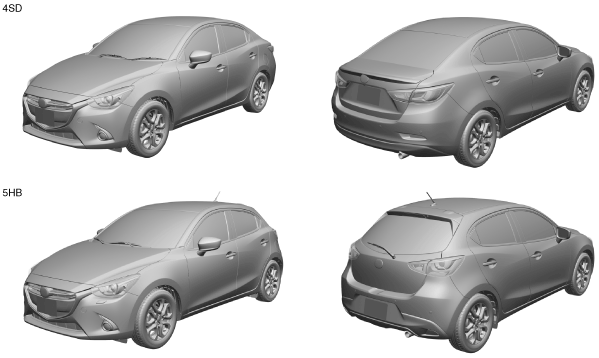 |
am2zzn00003192
AIM OF DEVELOPMENT
id000000100100
Product Concept
Vehicle Outline
Exterior design
am2zzn00003192
|
Interior design
am2zzn00003193
|
Engine
Suspension
am2zzn00002681
|
Rear brake (drum)
am2zzn00002682
|
Rear brake (disc)
am2zzn00002683
|
Brakes
Vehicle front side (L.H.D.)
am2zzn00001630
|
Vehicle front side (R.H.D.)
am2zzn00001631
|
Vehicle rear side
am2zzn00001632
|
Vehicle front side (L.H.D.)
am2zzn00002684
|
Vehicle front side (R.H.D.)
am2zzn00002685
|
Vehicle rear side
am2zzn00002686
|
Warning light and indicator light
am2zzn00003194
|
Vehicle front side (L.H.D.)
am2zzn00002687
|
Vehicle front side (R.H.D.)
am2zzn00002688
|
Vehicle rear side
am2zzn00002689
|
Warning light and indicator light
am2zzn00003195
|
Transaxle
am2zzn00003867
|
am2zzn00003868
|
am2zzn00002190
|
am2zzn00002360
|
Steering
L.H.D.
am2zzn00002019
|
R.H.D.
am2zzn00002020
|
Safety
Driver's support